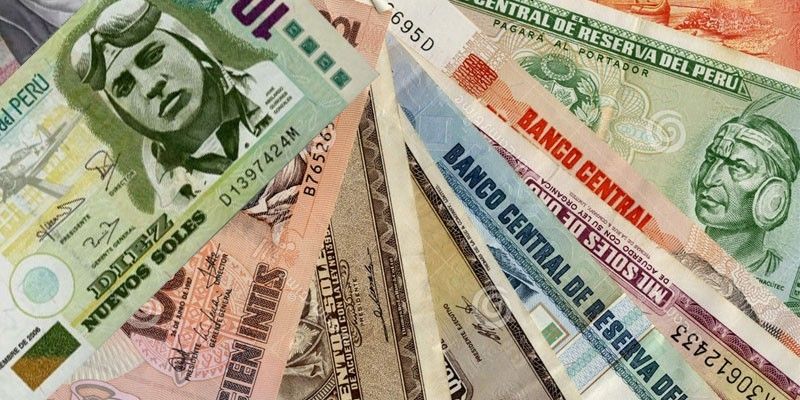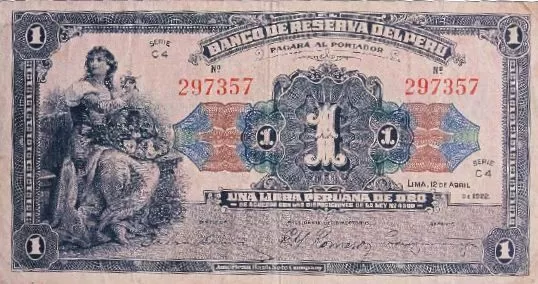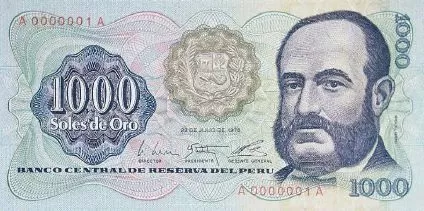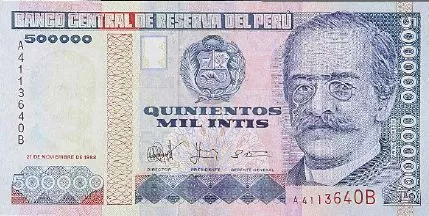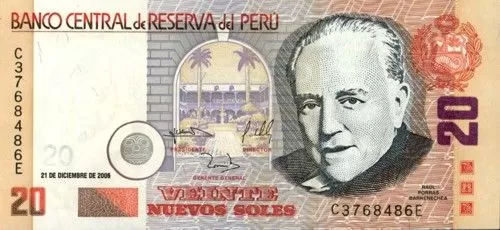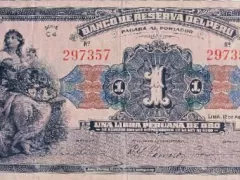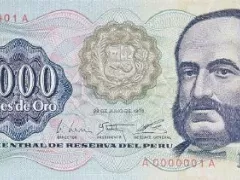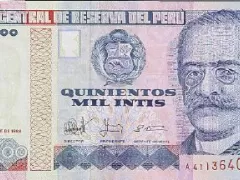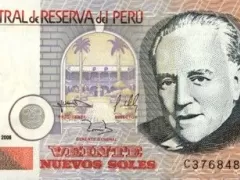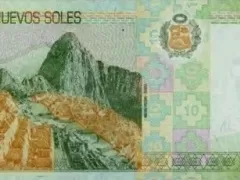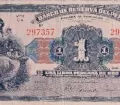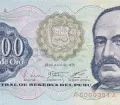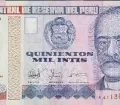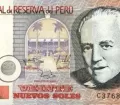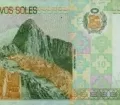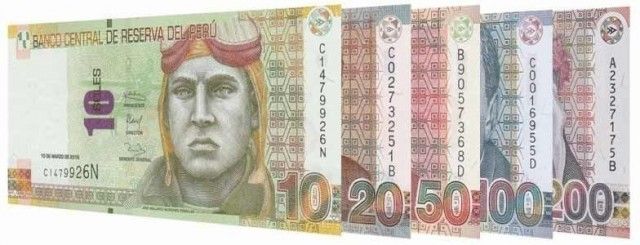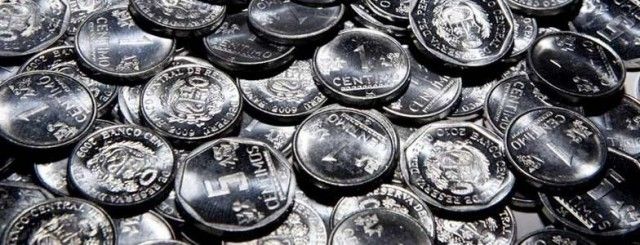Throughout its history Peru had quite a number of monetary systems: starting in Colonial times with the currency of the Spanish conquerors, the Real, to the Real and Peso of the early Peruvian Republic, to the Peruvian Sol, Peso, Peseta, Inca and Libra in the second half of the 19th century, to the Sol de Oro and the Inti of the 20th century to today’s Nuevo Sol and Sol.
Overview:
- Spanish Real (1568 - 1821) - Currency of the Viceroyalty of Peru
- Monetary systems of Peru in early Republican times (1821 - 1863)
- Peruvian Sol, Peso, Peseta and Inca (1863 - 1934)
- Libra Peruana de Oro - Peruvian Gold Pound (1898 – 1930)
- Sol de Oro (1922 – 1985)
- Inti (1985 – 1991)
- Nuevo Sol and Sol (1991 – …)
Spanish Real (1568 - 1821) - Currency of the Viceroyalty of Peru
After the Spaniards conquered the Inca Empire, they firmly established themselves in South America and Lima became the capital of the Viceroyalty of Peru. Because of the enormous production and influx of silver and gold from Peru to Spain, in 1561 Diego López de Zúñiga y Velasco, 4th Count of Nieva and sixth Viceroy of Peru - understanding the importance of minting coins in the Spanish colonies for the economic development and control - requested authorization from the Spanish Crown to establish a mint. On August 21, 1565 King Philip II of Spain issued a decree ordering the creation of a National Mint in Lima, the Casa de la Moneda, allowing the minting of silver coins, the Spanish Real.
The Spanish Real became the currency of all Spanish colonies in the Americas and were minted not only in Lima (Peruvian Real), but among others as well in Mexico City (Mexican Real), Caracas (Venezuelan Real) and Bogota (Colombian Real).
The silver coins of the Peruvian Real were minted in denominations of ¼, ½, 1, 2, 4 and 8 Reales. 8 Reales equaled 1 silver Peso. Gold coins were minted for ½, 1, 2, 4 and 8 Escudos; with 16 silver Reales being 1 gold Escudo.
Monetary systems of Peru in early Republican times (1821 - 1863)
After Peru’s independence in 1821, a provisional coinage was introduced in denominations of ¼ Real, ⅛ and ¼ Peso (equal to 1 and 2 Reales) and 8 Reales in the name of the Republic of Peru. However, these coins (except the 8 Reales coin) weren’t minted in silver anymore but in copper. From 1826, a regular coinage was issued with the same silver and gold denominations as during the colonial period.
Additionally, the Bank of Emancipation (Banco de la Emancipación) was established in 1822 issuing the first Peruvian paper money for 2 and 4 Reales and 1 Peso (8 Reales) which however was closed again on June 4, 1823 by President José de la Riva Agüero and issued bills publicly burnt.
From 1836 to 1839 - back then Peru was part of the Peru-Bolivia Confederation - the Republic of North Peru and the Republic of South Peru issued their own coins. In North Peru there were ½, 1, and 8 Reales, as well as ½, 1, 2, 4 and 8 Escudos coins while in South Peru ½, 2, 4 and 8 Reales and ½, 1 and 8 Escudos.
And to make it even more confusing, from 1858 to 1863 smaller ½ and 1 Real coins and 50 centimos as well as 25 and 50 centavos coins were introduced and the 4 and 8 Reales coins re-designed. In 1863, this transitional phase of coinage was replaced by a fully decimalized system.
Peruvian Sol, Peso, Peseta and Inca (1863 - 1934)
In 1863, the Sol was introduced in Peru, finally replacing the Real, the currency of the conquerors, step by step at a rate of 1 Sol equaling 10 Reales. The Sol was subdivided into 10 dineros or 100 centavos and pegged to the French franc.
From 1863, private banks such as the Banco La Providencia, the Banco del Peru and the London and South American Bank (later the London Bank of Mexico and South America) established themselves and issued Peso banknotes which were however replaced by paper money denominated in Soles in 1867.
In 1880, the Peruvian Peseta was introduced, however not replacing the Peruvian Sol and circulating only until 1882 simultaneously. The Peseta was subdivided into 2 Reales. 5 Pesetas equaled 1 Sol, or 1 Peseta was worth 20 centavos.
And in 1881, another currency unit, the Inca, was introduced for banknotes only. The Inca was subdivided into 10 reales de inca or 100 centavos de inca. 1 Inca was worth 10 Soles. As the Peruvian Peseta, the Peruvian Inca was short-lived and withdrawn in 1882.
Libra Peruana de Oro - Peruvian Gold Pound (1898 – 1930)
In 1898, the Libra Peruana de Oro (the Peruvian Gold Pound) was introduced pegged to the British Pound, which circulated simultaneously with the Sol(es) coins and banknotes. The Peruvian Libra followed the standard of the British sovereign, a gold coin having a nominal value of one pound sterling.
1 Libra equaled 10 Soles. It was issued in the form of gold coins (1⁄5 libra, 1⁄2 libra, 1 libra) and bearer cheques / gold certificates / notes (1⁄2 libra, 1 libra, 5 libras, 10 libras) issued by private banks. In 1922, the Peruvian Central Reserve Bank (Banco Central de la Reserva del Peru) took over the production of the Libra banknotes and soon began issuing notes denominated in Soles de Oro, the first being overprinted Libra notes with new Soles denominations.
Sol de Oro (1922 – 1985)
While since 1863 the Peruvian Sol was in circulation, in 1930 Peru left the gold standard and established an official rate to the US Dollar with 2.5 Soles equaling US$ 1.
Additionally, after the Libra banknotes already had to make way to Soles de Oro notes in 1922, the Sol coins as well were gradually replaced by Sol de Oro coins from the 1930s. Over the next few years, the Sol de Oro became the only legal tender in Peru.
The Sol de Oro served Peru well over the next decades. However, because of economic mismanagement, reform programs and the nationalization of important economic sectors by the military regime under General Velasco (1968 - 1975), Peru got into serious problems. Even after the country returned to a civilian democratic government under President Belaunde Terry in 1980, the economic collapse couldn’t be avoided; additionally because of natural disasters and the fall of international commodity prices. The result was a decreased production, depressed wages, exaggerated unemployment, increased (extreme) poverty, social unrest, and a dramatically fueled inflation.
In 1985, the Sol de Oro, the currency of the Era of the Peruvian Republic, was abandoned.
Inti (1985 – 1991)
With the hope for a better future and the new, young and charismatic Peruvian President Alan Garcia just elected a new currency, the Inti (named after the Inca sun god), was introduced in 1985. It was divided into 100 centimos. 1 Inti equaled 1,000 Soles de Oro.
Inti coins were issued in denominations of 1, 5, 10, 20 and 50 centimos and 1 and 5 Intis, banknotes initially in denominations of 10, 50 and 100 Intis as well as 500 Intis at the end of 1985 followed by 1,000 Intis the next year.
As Garcia wasn’t able to stabilize the country or economy and didn’t find solutions to fight the slow economy, inflation, flight of currency out of the country, immense poverty and social unrest, Peru drifted into even worse chaos. The bad economic state of the country and the emergence of terrorism in the late 1980s fueled the Inti to lose its value quickly.
Between 1988 and 1990 first 5000 and 10,000 Intis were issued additionally to above mentioned denominations, then 50,000 and 100,000 Intis banknotes and finally 500,0000. 1,000,000 and 5,000,000 Intis notes. Hyperinflation was in full swing, forcing the Peruvian government to introduce a new currency in 1991.
Nuevo Sol and Sol (1991 – …)
In 1991, the Nuevo Sol (S/.) was introduced as the new Peruvian currency. 1 Nuevo Sol equaled 1,000,000 Intis.
The Nuevo Sol is subdivided into 100 centimos. Coins have been issued for 1 (removed from circulation in 2011), 5 (removed from circulation in 2019), 10, 20 and 50 centimos as well as S/. 1, S/. 2 and S/. 5. There are banknotes for S/. 10, S/. 20, S/. 50, S/. 100 and S/. 200.
Over the years, the Nuevo Sol developed into a quite stable currency with a moderate inflation and has a more or less steady exchange rate with the US Dollar.
Since its introduction, the Nuevo Sol(es) coins changed slightly while the banknotes have undergone a couple of design and security improvements. In June 2011 completely new S/. 10 and S/. 20 and in August 2011 new S/. 50, S/. 100 and S/. 200 bills have been put into circulation.
In November 2015, the Peruvian Congress, for whatever reasons, renamed the Nuevo Sol to just Sol (S/). The denominations and the international code PEN remained the same.
Since 2016 until today only new S/ 1, S/ 2 and S/ 5 coins with the correct currency name “Sol” were put into circulation and S/ 10, S/ 20 and S/ 100 banknotes, which actually are design- and security-wise just an enhancement of the latest Nuevo Soles notes, but now with the correct name of the currency “Sol”, were introduced.
Nuevo Sol(es) and Sol(es) coins and banknotes are both legal tender and circulate simultaneously.
Get to know the current Peruvian currencies:


